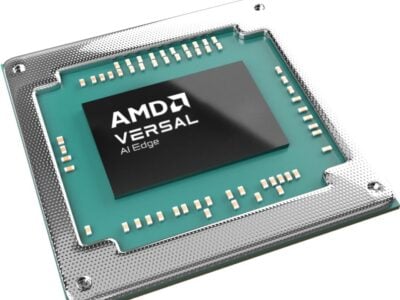
In its FY 2013, Macronix achieved just 8 % of its total sales with customers in the automotive industry. Growing at a pace of 41 %, this segment however was the most dynamic one within the circle of Macronix’ business segments (Computing; Consumer; Communications; Wireless; Automotive, and Industrial). "In the automotive business, Japan and Europe are the key regions", explained Macronix CEO Miin Wu at a press briefing in Munich. The importance of the European automotive industry for Macronix is reflected in the fact that the company’s European General Manager, Chris Bowen, also holds the function of the Vice President Automotive for Macronix’ global operations.
The company’s technology roadmap is state of the art; the XtraROM product line is currently producing at the 32nm nanometre node, SLC NAND at 36 nanometres. Also with 36nm structures, the Vertical Gate 3D NAND technology is scheduled for production start in 2016. Solely NOR Flash products are still manufactured with 55nm geometries, but the company has plans to switch to 42 nm structures in 2016 or later. "The high quality and reliability requirements for NOR translate into a slower pace in the roadmap", Wu explained. He claims that the company’s proprietary sNova quality management enables them to identify yield problems in each of its three fabs "within minutes whereas others need days", claims Wu. Products for automotive and industrial markets have the same product design, and they are designed to meet automotive quality standard TS16949. As a consequence of its quality management, the failure rate among its products is "below single-digit PPM", says Wu.
In terms of applications requirements, future generations will need to be more energy-efficient, a direct consequence of the trend towards wearables and IoT-related designs. In the automotive industry, larger digital instrument clusters with higher functionality as well as increasingly complex and powerful driver assistant systems are calling for more performance. And since automotive customers expect to have the electronic systems of their car to be live immediately after the turn of the key, memory chips increasingly need to offer higher bandwidth – a requirement Macronix hopes to meet with its Dual quad SPI interface which enables data transfer rates of up to 200 MByte/s.
Currently the company is in the process of introducing a variety of NAND and NOR memories that feature either very low power consumption or a wide operating temperature rage or both. An example is the low power NOR Flash product family MX25U which covers the density range from 512 kByte to 512 MByte. Designed for operation in a wide temperature range from -40°C to +125°C, the , the MX25U is first such product in the industry that meets the automotive quality standard AEC-Q100, explained Macronix European Technical Manager Jocelyn Carroue.
Related articles:
Answering the call for high performance, high data throughput in automotive applications
Renesas samples Flash MCUs with 40nm leading-edge geometries
Freescale, Macronix’s combine serial Flash with Qorivva microcontroller in dashboard application
 If you enjoyed this article, you will like the following ones: don't miss them by subscribing to :
eeNews on Google News
If you enjoyed this article, you will like the following ones: don't miss them by subscribing to :
eeNews on Google News




